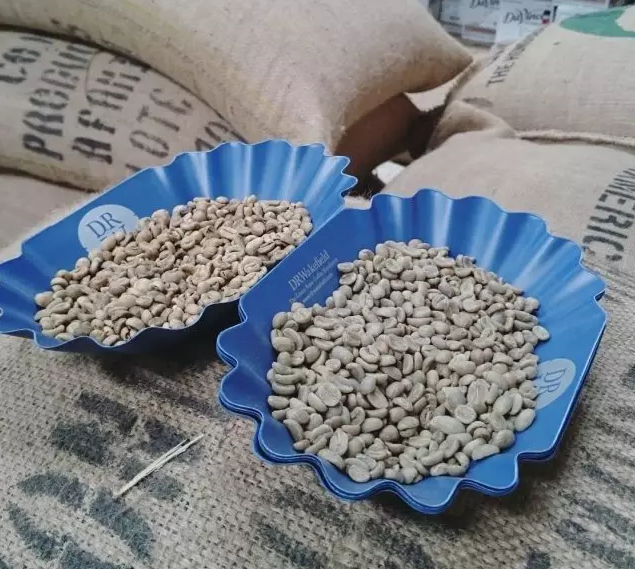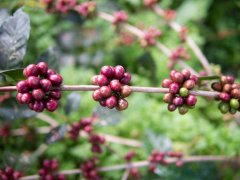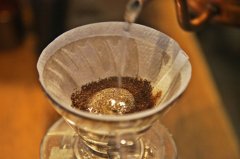What is the taste often mentioned in coffee?
Taste is a flavor that we experience through touch. The hand is the most sensitive part of the body, followed by the lips and tongue. Our mouths are covered with nerve endings that respond to the density, viscosity, cold and heat of food and drink. The unique tactile feeling of coffee is usually an important factor in determining its quality, that is, the mellow thickness and astringency of coffee. Taste is tactile. What is mellow thickness?
Let's start with the basics: alcohol thickness is the structure and texture of coffee. In The Professional Barista's Handbook, Scott Rao defines alcohol thickness as "the weight or plumpness of the drink you feel in your mouth."
Since the thickness of alcohol is an element of taste, you can know that there will be differences. In The Coffee Dictionary's book, Maxwell writes, "imagine that it would be interesting when you can feel light but sticky coffee, or full-bodied coffee with a juicy taste." Alcohol thickness is not what we taste, but what we feel. However, this can affect the overall flavor of coffee, because the flavor is a combination of many elements-such as taste, aroma, texture, and even sound and vision.
In the author's experience as a barista, alcohol thickness is one of the three elements pursued by coffee drinkers (the other two are bright acidity and clear flavor).
Fat must be an important indicator that can not be avoided. In addition to giving espresso important look-and-feel characteristics, oil also changes the flavor and taste of espresso to some extent. But what is grease actually? have you thought about this question?
Literally, oil is the golden to chocolate liquid just extracted from the upper layer of espresso, which is inextricably linked to the "pressure" itself. after the extraction is completed, the lighter color of the oil floats on the upper layer. the darker coffee liquid will stand still in the lower layer.
Concentrated oil is a mixture of many substances: water extracts the soluble substances in the coffee powder layer under heating and pressurization, which emulsifies the natural fat and oil in the coffee and mixes the air to form some tiny and fine bubbles. At the same time, because the roasted fresh coffee itself releases a certain amount of carbon dioxide, these gases will also participate in the above-mentioned emulsification reaction; the more freshly roasted coffee, the more carbon dioxide it emits. so we can also see large bubbles gushing out during the extraction process.
On the one hand, oil reflects the status of raw coffee beans, the more oil, the more natural oil content of coffee beans, which is also related to the handling of raw beans; at the same time, it also reflects the roasting degree and freshness of coffee beans. Of course, some people think that concentrated fat tastes good, but this is not absolutely true-Luodou's fat, for example, is beautiful.
Acidity (acid)
Coffee needs elegant and attractive acid to have a higher score, including that coffee itself contains a lot of organic acids (chlorogenic acid, malic acid, citric acid, gluconic acid, etc.).
At the same time, a large number of fruity alcohols, esters, aldehydes and ketones, all of which give coffee special acidity with fruit flavor.
So coffee more or less contains sour substances, and after all, it's a berry.
What makes coffee acidity?
Acidity is the most important item in coffee tasting.
Acidity, which is usually used to describe the flavor of coffee, describes a lively, fresh, refreshing feeling, similar to the taste of wine, with a strong and exciting texture, and sometimes called brightness.
Without acidity, coffee tastes empty and boring, just like it has no vitality.
Fresh coffee beans contain a variety of organic chemicals that make up the unique taste of coffee. One of them is chlorogenic acid, which gradually decomposes in the baking process, producing a large number of aromatic substances. What's the aroma?
Like many plants, more than 60% of the substances in raw coffee beans are carbohydrates, the fat content is about 10-15%, while the protein content is less than 10%, which is somewhat different from other plants, which should be regarded as caffeine, chlorogenic acid, fenugreek base and so on.
But no matter how hard you put your heart into each step, from seed to cup, planting, baking, extraction, the total amount of soluble matter in a cup of coffee will not exceed 2%.
But the funny thing is, normally, as long as the organic acid content in a cup of coffee reaches 0.4%, people can easily and obviously feel the acidity of the coffee. The proportion of organic acids in coffee can easily exceed 0.4%, but other ingredients in coffee can be masked, making it impossible to feel more.
In fact, people's sense of taste, apart from the discussion of smell, can only be perceived as sour, sweet, bitter, salty and fresh, while 0.01% of the ingredients in a cup of coffee are enough to make people feel bitter, and 0.1% is enough to make us aware of sour taste.

Important Notice :
前街咖啡 FrontStreet Coffee has moved to new addredd:
FrontStreet Coffee Address: 315,Donghua East Road,GuangZhou
Tel:020 38364473
- Prev

How should the planting conditions of coffee trees be planted?
Coffee is one of the three biggest drinks in the world, but do you know how it is grown? The important condition of coffee cultivation has a noun called coffee belt. There are more than 60 coffee producing countries in the world, most of which are located in the tropics and subtropics between the Tropic of Cancer (latitude 2326). This coffee growing area is called coffee belt (Coffee Belt) or coffee zone (
- Next

The importance of grinding and extraction in coffee
Where a cup of espresso comes from, high-quality coffee beans are very important, and the degree of grinding of coffee powder is also very important. The degree of grinding of coffee powder will greatly change the taste of coffee, the taste of coffee will become silky, or the taste will become bitter. The effect of grinding degree on coffee taste is mainly in three aspects: contact time between coffee powder and water, extraction rate and water flow.
Related
- Beginners will see the "Coffee pull flower" guide!
- What is the difference between ice blog purified milk and ordinary milk coffee?
- Why is the Philippines the largest producer of crops in Liberia?
- For coffee extraction, should the fine powder be retained?
- How does extracted espresso fill pressed powder? How much strength does it take to press the powder?
- How to make jasmine cold extract coffee? Is the jasmine + latte good?
- Will this little toy really make the coffee taste better? How does Lily Drip affect coffee extraction?
- Will the action of slapping the filter cup also affect coffee extraction?
- What's the difference between powder-to-water ratio and powder-to-liquid ratio?
- What is the Ethiopian local species? What does it have to do with Heirloom native species?

